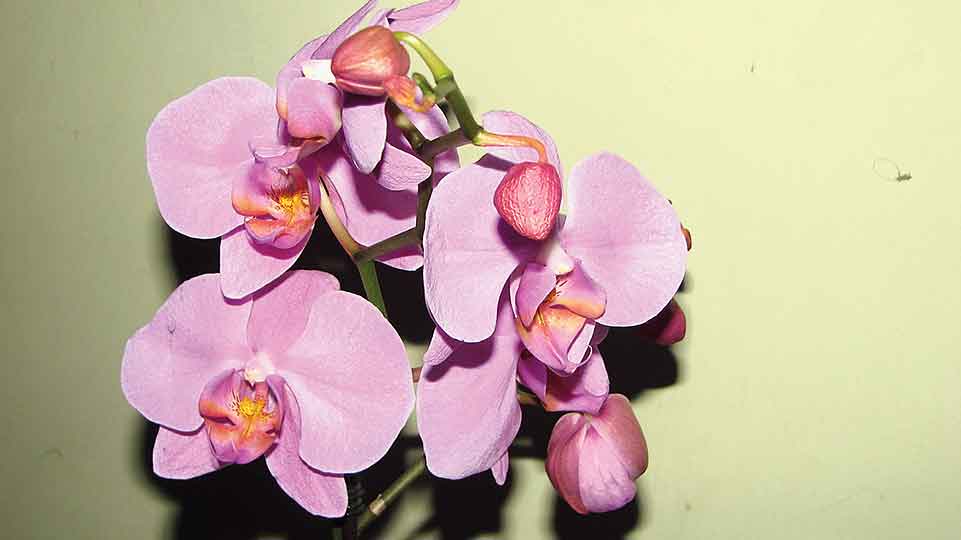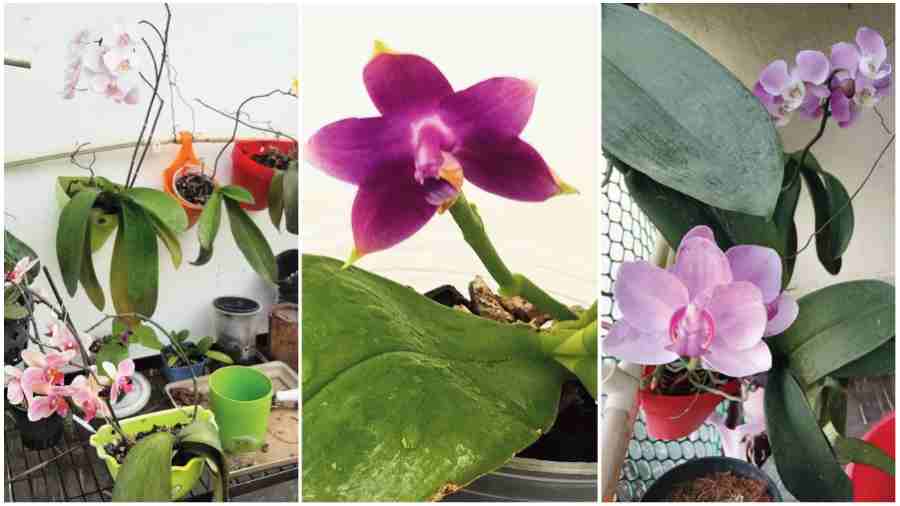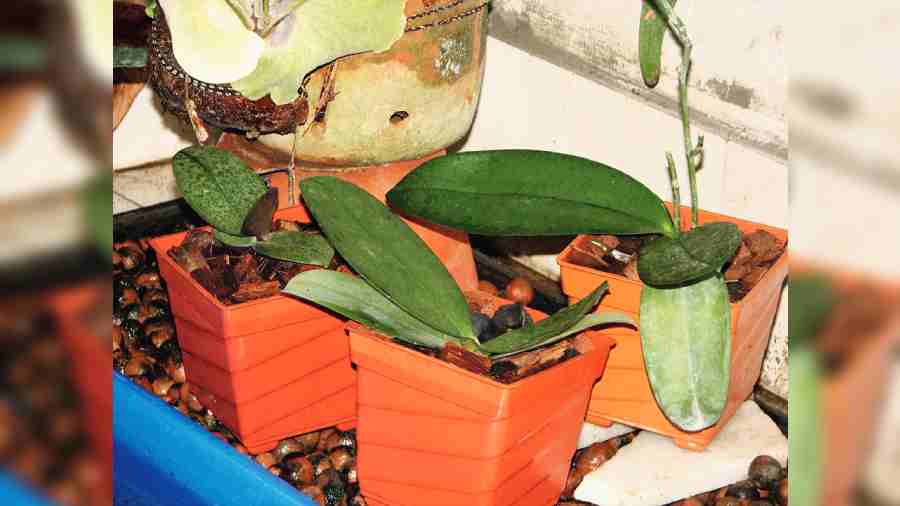Phalaenopsis Orchids are among the most popular and sought-after Orchids in the world. They are easy to grow and are commonly known as Moth Orchids or Butterfly Orchids.
The term Phalaenopsis comes from the Greek word phalaina meaning moth and opsis meaning appearance. This is because the flowers resemble white moths in their natural habitat. They grow from a single stem and are hence called a monopodial Orchids. They do not have large water-storing pseudobulbs. Phalaenopsis need warm growing conditions and the flowers are long lasting.
The Phalaenopsis family has nearly 65 to 70 species apart from its natural hybrids. The genus Phalaenopsis has been categorised into two sections:
- The Euphalaenopsis that includes Phalaenopsis amabilis and its allies
- The Stauroglottis based on Phalaenopsis equestris and its allies



Different varieties of Butterfly Orchids
Phalaenopsis is a widespread genus ranging from Assam and the eastern Himalayas to Myanmar, Malaysia, Indonesia, the Philippines, China, Taiwan and Australia. Here in India there are three species of Phalaenopsis found — Phalaenopsis parishii, mannii and lobbii. Here’s how to care for your plant, should you choose to grow it in your garden-
Temperature: Phalaenopsis Orchids prefer temperatures between 20 to 30 degrees Celsius. The temperature requirements are above 16 degrees celsius at night and between 20 degrees and 30 degrees celsius during the day. But they can tolerate much more heat if air circulation is good. Cooler night temperatures in the autumn will induce flowering. Fluctuation in temperatures may result in dropping of ready-to-open buds.
Light: They need lots of light. They can tolerate direct light in the morning till 9am. After that indirect sunlight will be suitable for them, but too much sunlight will scorch the leaves. They need about 20-30 per cent sunlight. Inadequate light will encourage only foliar growth. They thrive best in the shade with no direct sunlight. However, some species like Phalaenopsis Schillerina and Stuartiana can tolerate brighter conditions.
The leaves of Phalaenopsis are a good indicator of whether or not the plant is receiving sufficient light. Darker leaves mean that the plant needs more light, while red-tinged leaves are a sign of excessive light.
Water: They prefer moist but not soggy conditions. Water them thoroughly in the morning. Regularity of water will depend on the media/ pot you use for the Orchid. Coconut husk will retain moisture for a longer time and should be allowed to dry out before watering the plant again. You can water them if the husk is nearly dry.
If you are using bark chips/ cinder/ small brick pieces which dry out faster, water them in a frequent interval. Avoid overhead watering since it may result in crown rot.
Media and pot: The choice for pot size and growing media varies depending on the plant's current growth stage and climate conditions. Phalaenopsis Orchids are usually cultivated in pots measuring four to six inches in diameter because they like to be root-bound in small pots. As they mature, they should be re-potted once every one to three years into a bigger pot. Use a pot bigger by one inch in diameter than the previous pot is ideal. As for the growing media, Phalaenopsis grow best when water and air are allowed to move freely around the roots. Charcoal, small brick pieces or cinder are usually used in Calcutta.
Fertiliser: Fertilise Phalaenopsis Orchids using any balanced orchid fertiliser in the ration N:P:K (20:20:20) regularly. Fertilising half-strength once a week or every other week in summer, or once a month during the winter, is ideal.

Arijit Poddar, GD Block resident and secretary of Bidhannagar Horticultural Society, shares innovative tips on gardening
